- Relieve Pain from Plantar Fasciitis, Metatarsalgia, Heel Pain, and Arch Pain: Ideal for people with high arches, these orthotic insoles provide motion and pronation control to maintain a healthy, natural foot form all day long
- Stabilize and Support Your Arches: Our insoles are designed with a built-in shell arch support that provides moderate control to prevent arch collapse and hold your foot in natural alignment. The deep thin heel cup cradles your heel to limit excessive ankle movement
- Reduce Strain and Pressure: By lifting the bones in the forefoot, our arch supports help eliminate strain on the plantar fascia and reduce pressure and friction on the ball of the foot, relieving pain under the ball of the foot (Metatarsalgia) and preventing arch pain and plantar fasciitis
- Comfortable and Convenient: Our insoles feature a low profile forefoot that makes them easy to fit into shoes, a Coolmax top cover that cools your foot and reduces friction, and a shock-absorbing cushioning foam base layer that provides all-day comfort
- Risk-Free Guarantee: We’re confident you’ll love our insoles, but if they don’t suit your high arch feet, we offer a full refund, no return necessary
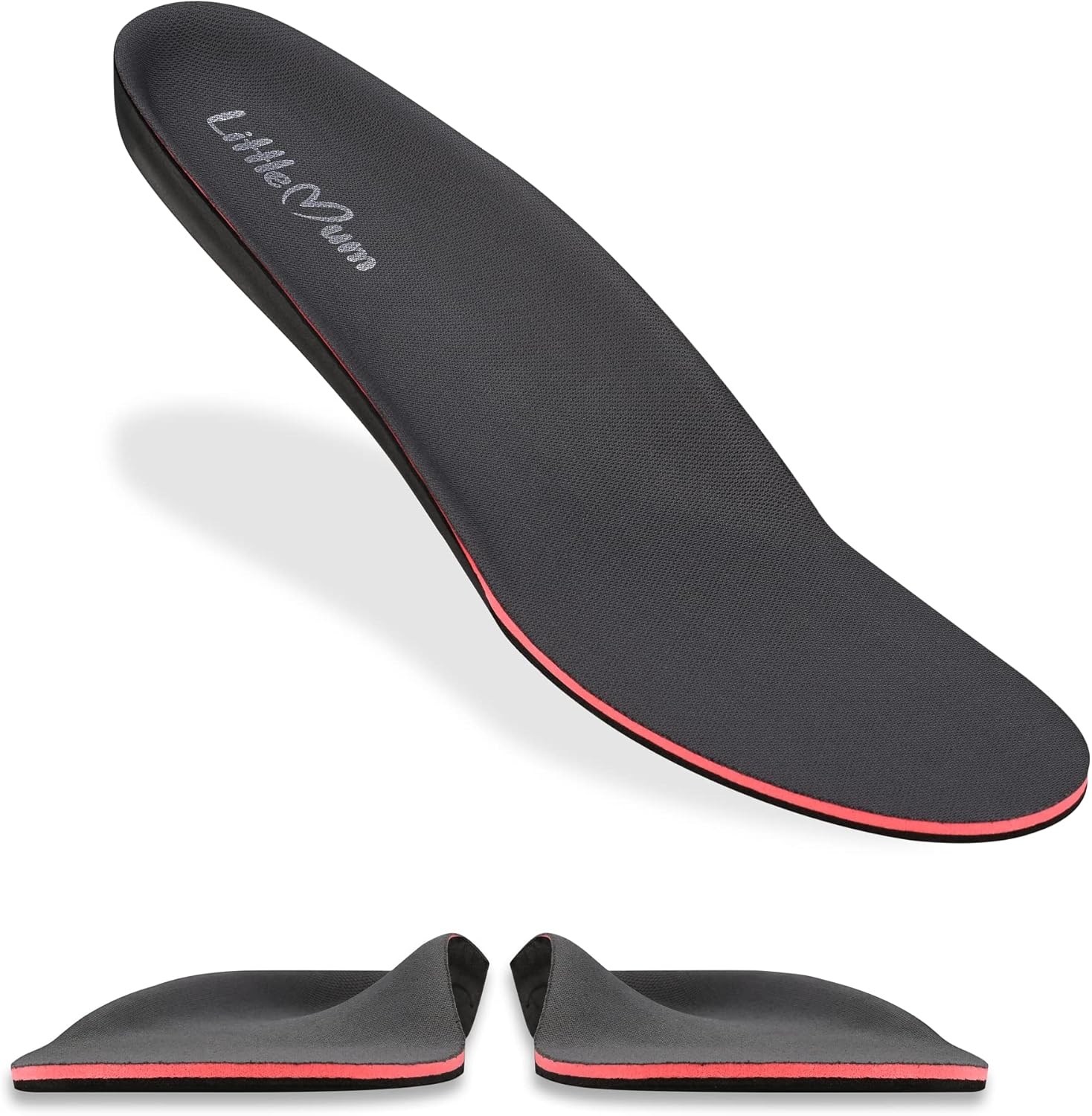
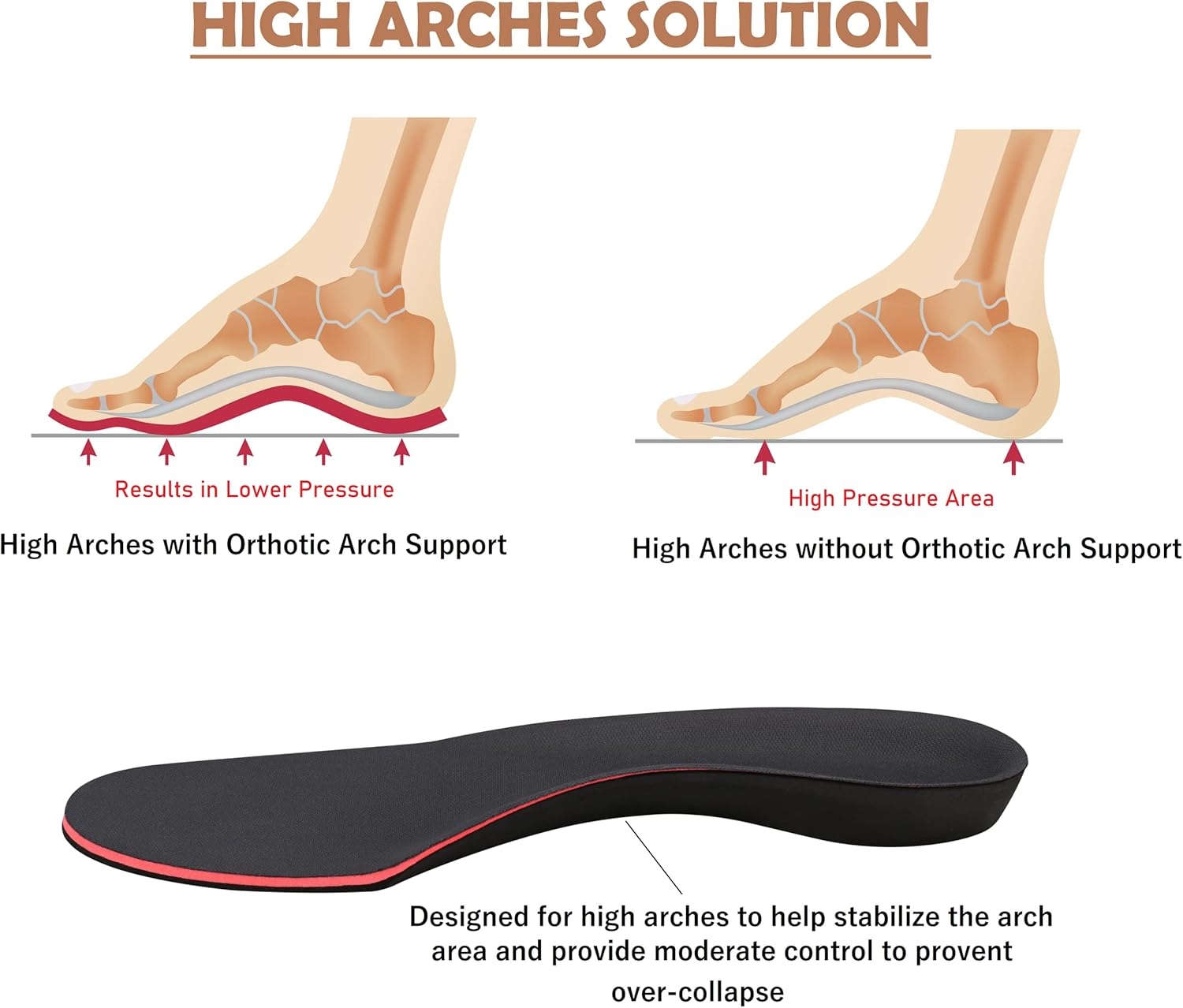
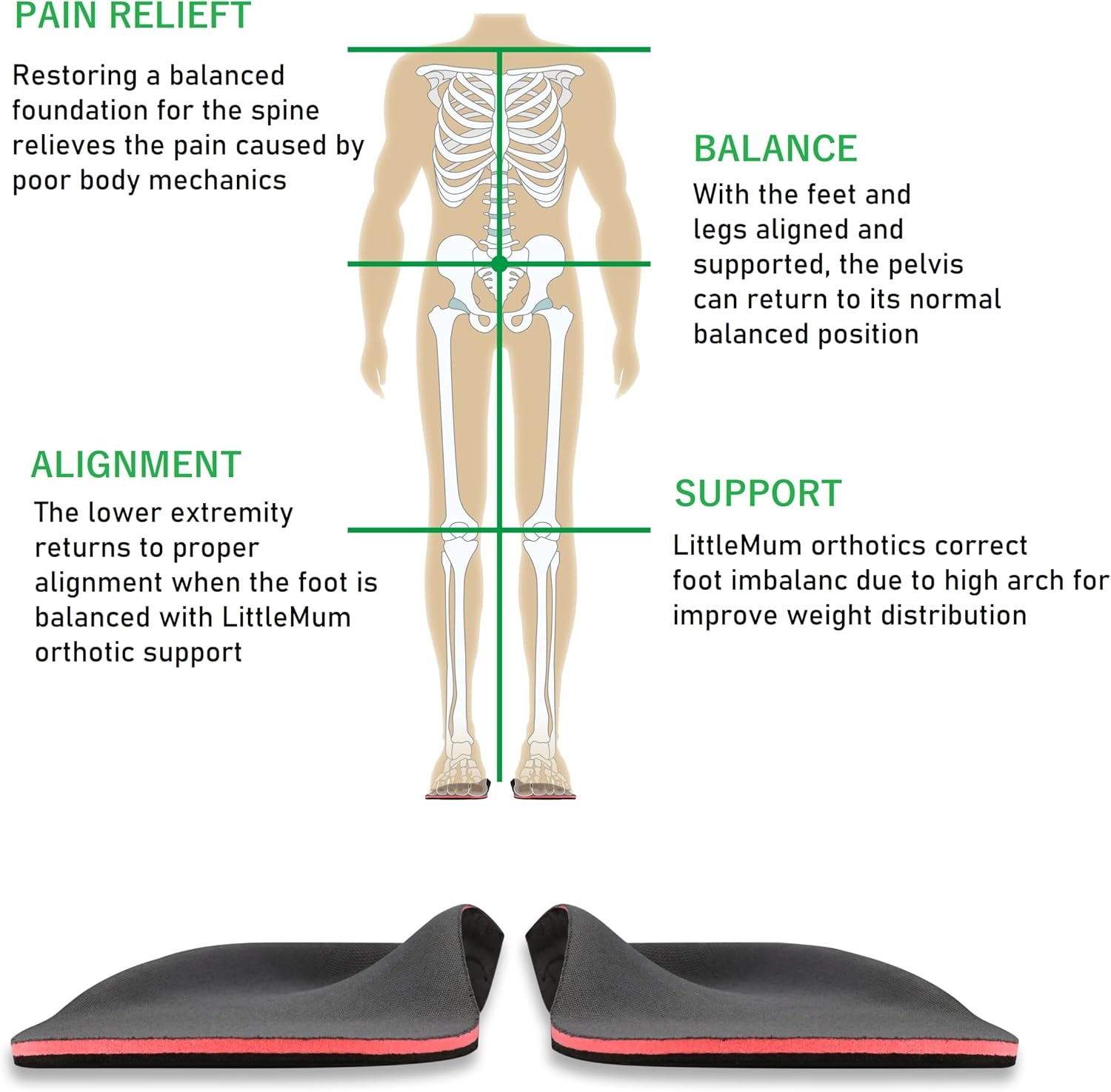
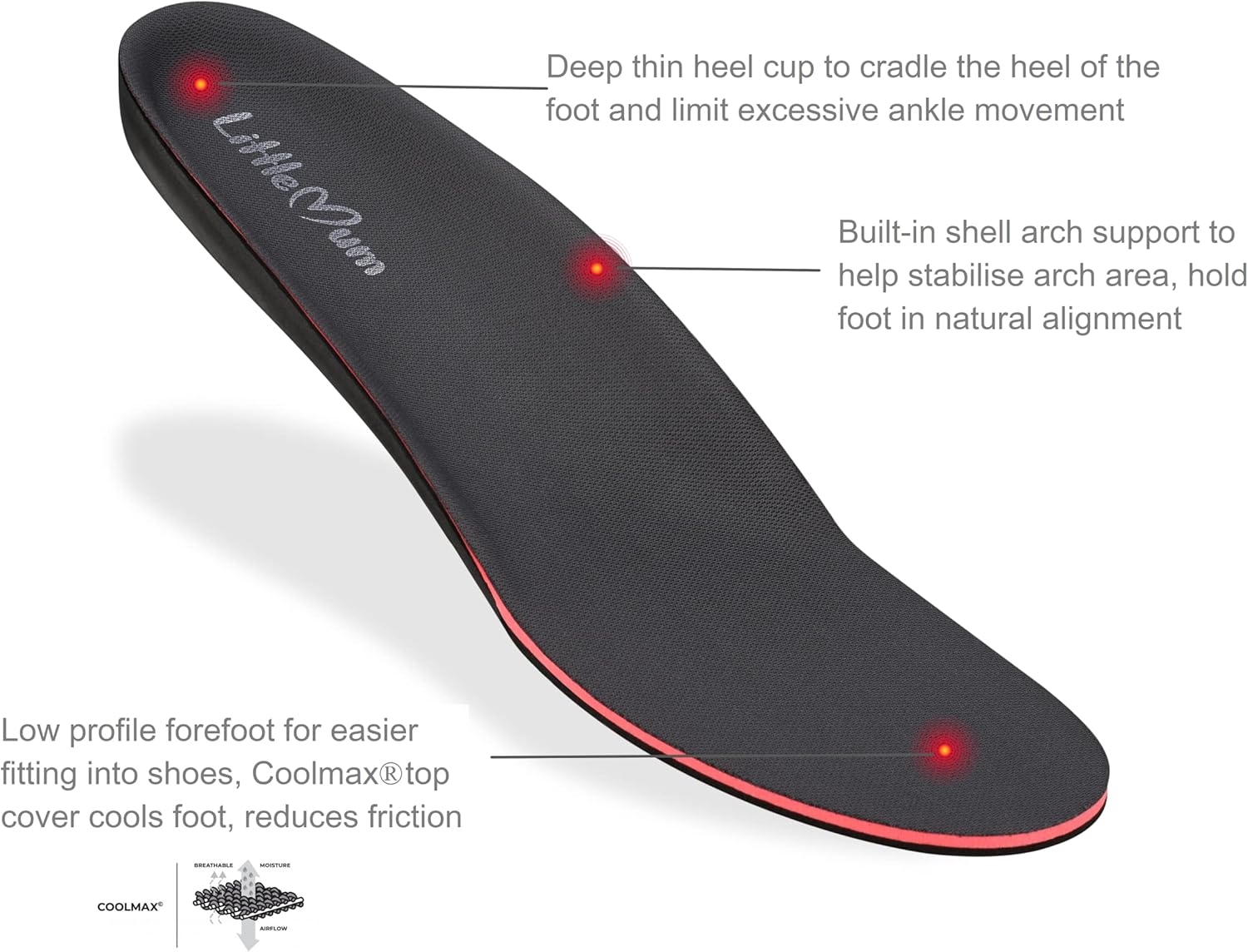

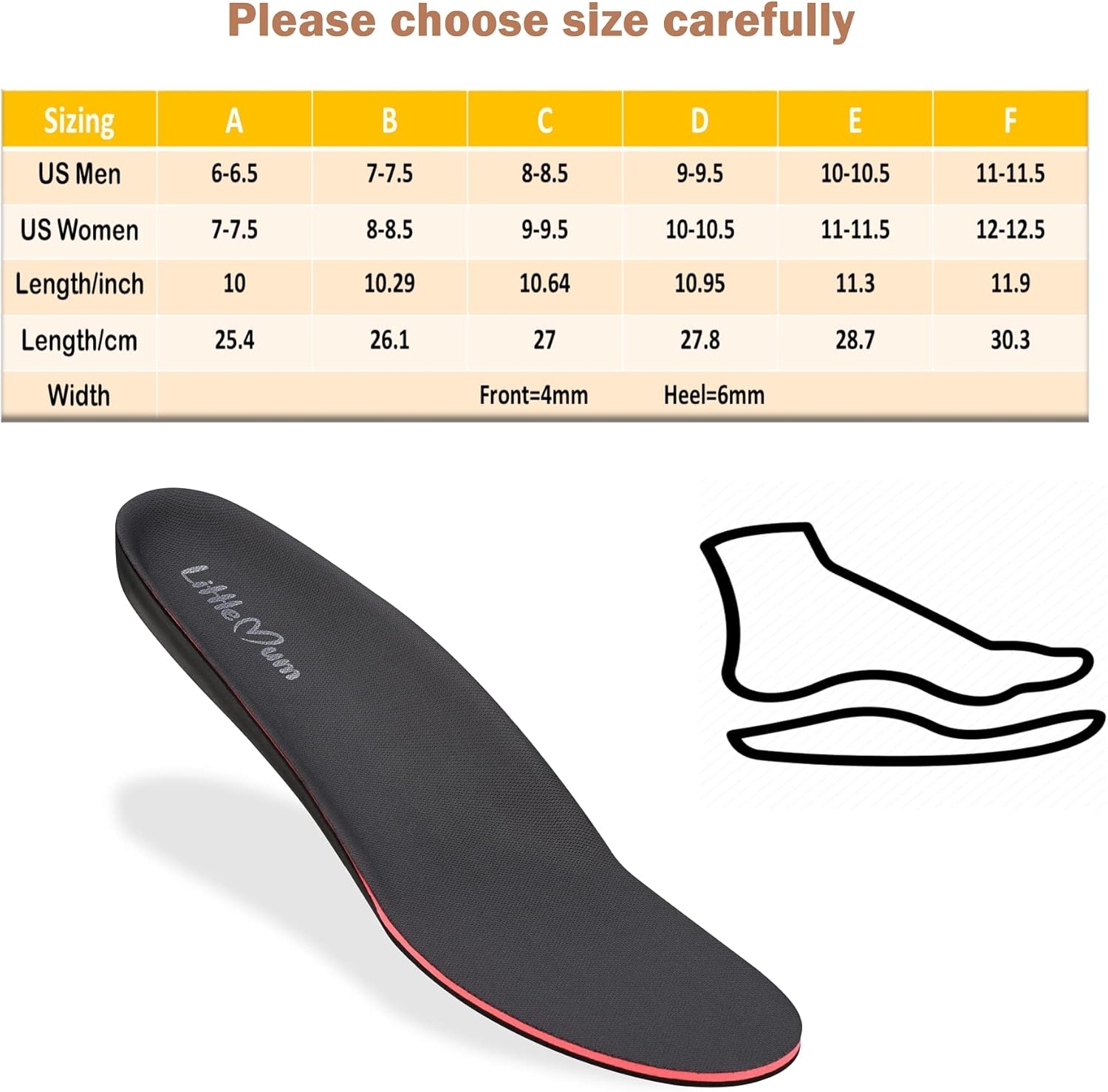
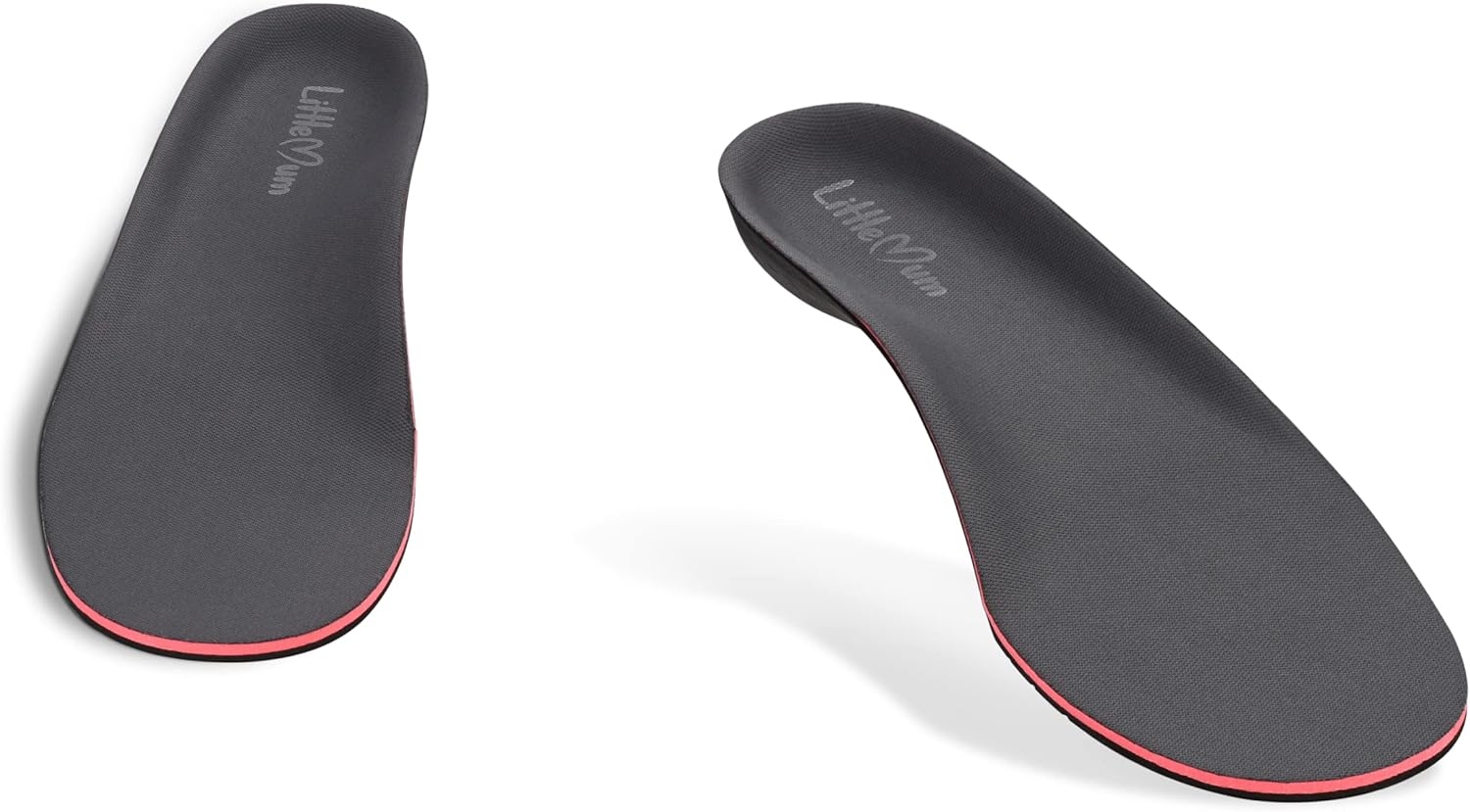
Product Description


Free yourself from foot pain: Could high arches be the root of your Plantar Fasciitis or Metatarsalgia?
- A study published in the Journal of the American Podiatric Medical Association found that individuals with high arches were more likely to develop plantar fasciitis compared to those with normal or low arches. The study also found that those with high arches had a higher likelihood of developing a thicker and more stiff plantar fascia, which may contribute to the development of plantar fasciitis
- A study published in the Journal of Foot and Ankle Research found that individuals with high arches had a higher likelihood of developing metatarsalgia compared to those with normal or low arches. The study also found that those with high arches had a greater pressure distribution on the metatarsal heads, which may contribute to the development of metatarsalgia.
- Another study published in the Journal of Orthopaedic Research found that high arches increased the risk of plantar fasciitis by placing increased stress on the plantar fascia.
- A systematic review of the literature published in the Journal of Foot and Ankle Research concluded that high arches were a significant risk factor for the development of plantar fasciitis.

Say goodbye to Plantar Fasciitis and Metatarsalgia for good – learn how high arch feet could be to blame
- High arch feet, also known as cavus foot, can contribute to the development of plantar fasciitis and metatarsalgia. This is because high arches can cause an uneven distribution of weight and pressure on the feet, leading to increased stress on the plantar fascia and the balls of the feet.
- In the case of plantar fasciitis, high arches can cause excessive tension on the plantar fascia, which can lead to inflammation and pain. The high arches can also cause the foot to roll outward when walking, which can further exacerbate the tension on the plantar fascia.
- For metatarsalgia, high arches can cause increased pressure on the balls of the feet, leading to pain and discomfort. This is because the high arches can cause more weight to be distributed onto the metatarsal heads, which are the bones in the balls of the feet that bear most of the weight during walking and running.
- To help prevent or alleviate plantar fasciitis and metatarsalgia associated with high arches, it’s important to wear supportive shoes with good arch support and cushioning. Insoles or orthotics with arch support and metatarsal pads may also be helpful in reducing pain and discomfort.

There are a few simple tests you can do to determine if you have high arches
- Wet foot test: Wet the sole of your foot, then stand on a flat surface such as a piece of paper or a concrete floor. Look at the footprint you leave behind. If you see a narrow, curved imprint with a high arch and a thin outer edge, you may have high arches.
- Foot flexibility test: Sit on a chair with your feet flat on the ground. Slide your hand under the arch of your foot. If you can fit your entire hand under your arch, you may have high arches.
- Toe test: Stand up and wiggle your toes. If your toes curl downward and form a claw-like shape, it may be a sign of high arches.
Keep in mind that these tests are not diagnostic and should not replace a professional evaluation by a healthcare provider or a podiatrist.

How to choose right insoles if you are suffering plantar fasciitis and metatarsalgia

How can LittleMum High Arch Orthotis could help
- LittleMum high arch insoles are designed to provide additional support and cushioning for individuals with high arches, which can help to reduce pain and discomfort associated with plantar fasciitis and metatarsalgia.
- The insoles are made with a deep heel cup and arch support, which can help to stabilize the foot and reduce excessive motion that can contribute to plantar fasciitis and metatarsalgia. The insoles also feature metatarsal pads or raised areas under the balls of the feet, which can help to distribute weight more evenly across the foot and reduce pressure on the metatarsal heads.
- Using LittleMum high arch insoles can also help to absorb shock and reduce impact forces when walking or running, which can help to reduce stress on the feet and alleviate pain and discomfort.

- Available in a Full Length sizing A-F, for men from size 6 to size 11.5, for women from size 7 to 12.5. The Insoles are sized by a range of shoe sizes. If you know your foot measurements then pick the insole that corresponds with your foot size. If you are between sizes (you wear a size 9.5 when the insoles are sized “8-9” and “10-11”), you should generally buy the next size up.
- Start Slowly: If you’re new to wearing insoles, start by wearing them for short periods of time and gradually increasing the length of time you wear them each day. This can help your feet adjust to the new support and cushioning and prevent any discomfort or pain.
- Make Sure They Fit Properly: It’s important to choose insoles that fit properly in your shoes. Look for insoles that are the right size for your shoes and provide a snug fit without being too tight or uncomfortable.
- Replace Them Regularly: Over time, insoles can lose their cushioning and support, which can reduce their effectiveness. It’s important to replace your insoles regularly, especially if you wear them frequently or if you notice signs of wear and tear.
- Use Them with Proper Footwear: Insoles work best when used with supportive footwear that provides a stable base for your feet. Look for shoes that provide good arch support and cushioning, and avoid high heels or shoes with thin, unsupportive soles.











